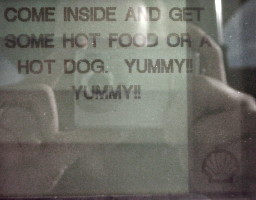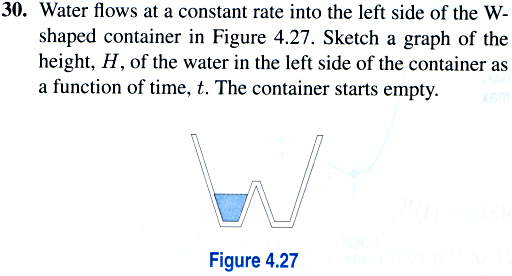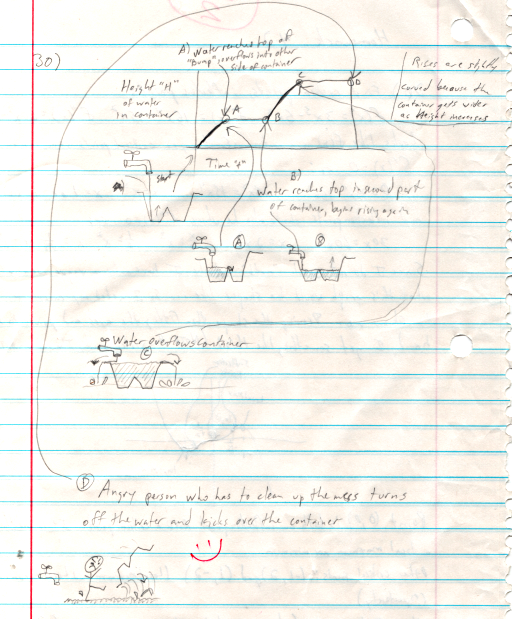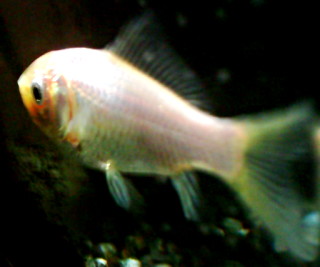Injustice! Perfidy! HUMBUG!
Periodically, someone puts up a “could you pass a grade-school science class” quiz. The one linked to the image below goes to one that I just broke down and took, purely out of curiousity. Take a look at this outrage!:

Oh, sure, it LOOKS good, but what you don’t see is that it only gave me a 96%, implying that I missed one (it was a short quiz)! Sure, the quiz was very much in the modern fashion for “standardized testing” (aka the “No Child Left Awake” project) where the emphasis is on memorizing stuff for a test rather than actual comprehension. So, I thought, maybe I hadn’t correctly memorized which word was correct for one of the word-memorization questions. But, no, according to the “answer sheet”, the one I supposedly got wrong was this one:
(Note: If you’re planning to actually take that quiz, do so now before you read on and I give away one of the answers…)
“How do mammals respire?”
The options were:
- Aerobically
- Anaerobically
- Both aerobically and anaerobically
Come on, I may hardly ever concern myself with perverse eukaryotic systems but…never mind just “mammals”, as far as I know, all eukaryotes (animals, plants, and fungi) only possess aerobic (oxygen-requiring) respiratory systems.
However, the “answer sheet” for the quiz claims that the answer is “Both aerobically and anaerobically”.
So….they’re wrong. I’m pretty sure what what they were intending to ask, given this answer, is “what kind of metabolism do mammals have?”, in which case their answer is correct.
See, “respiration” is only one part of the cellular energy-generating system. Specifically, it’s our friend, the Electron Transport Chain, which (to grossly oversimplify) harnesses the energy of oxygen sucking electrons off the end of the chain various biochemicals to recharge molecules of ATP. That’s not the only way a cell can get ATP, though. What the quiz authors are presumably alluding to is that there are non-oxygen-requiring biochemical pathways that animal cells can take to make energy – such as the one your muscles use when they can’t get enough oxygen, which involves production of lactic acid, which in turn gets blamed for the “burn” sensation you get when you work your muscles hard.
So, the authors of this quiz are bad, bad people, besmirching my reputation and harming my precious self-esteem by giving me less than 100% on that quiz!
On a related subject: breathing causes cancer in Sprague-Dawley™ rats!
No, seriously, it’s true – try raising one group of Sprague-Dawley™ rats with air, and one group with no air, and examing both populations 150 days later. I guarantee you’ll find many more cancerous growths in the “with air” group than in the group that was denied air to breathe…
What brought this outburst on? It was this blog article. “No, It’s for Real: Aspartame Causes Cancer”, the post proclaims. They’re talking about This study(pdf). Go ahead, take a look, but in particular, look at the tables of actual data, not the paper’s abstract. In particular, take a look at Figure 1, especially “D” and “E” (showing survival rates for the different groups of Sprague-Dawley™ rats as the study progressed), and at the number of “tumor-bearing animals” in Table 2.
Notice that at around 120 days on the survival graphs, the groups with the highest percentage of members still alive were the groups receiving the most aspartame in their feed. It’s worth noting that the highest-Aspartame group there was getting roughly the equivalent of a human drinking <em>thousands</em> of cans of diet soda every day. Also note, in fairness, that both graphs seem to show little difference between the groups, so rather than assuming that Aspartame makes Sprague-Dawley™ rats live longer, I would tend to assume that there’s really not much difference.
Notice also that in terms of the percentage of Sprague-Dawley™ rats that developed one or more tumors, there were fewer of them in the group that got the equivalent of 500 mg/kg of aspartame: which scaled up to human terms means about 200-250 cans of diet soda EVERY DAY worth of aspartame.
You may be wondering why I keep mentioning Sprague-Dawley™. It’s because this is a particular commercially-bred strain of rat that’s popular with labs for this kind of thing. One point that isn’t always mentioned is this: Sprague-Dawley™ rats are known to be prone to developing cancer spontaneously. This can be handy if you’re doing studies of “borderline” carcinogens. The hope is that if something has even a tiny ability to cause cancer, you’ll be able to measure the effect in a population of critters known to get cancer at the drop of a metaphorical hat, when in a human population the incidence might be so rare that you can’t distinguish it from random chance. To my admittedly-not-big-on-the-biochemistry-of-perverse-eukaryotes mind, this study really seems to show that there’s little or no effect – and certainly no dose-dependent effect – of aspartame even on cancer-prone lab rats.
I don’t know what it is, but “artificial sweeteners”, and especially aspartame, seem to generate such passionate hatred in some people. It reminds me a great deal of people’s reactions to “genetically modified” crops. People just really want to hate it. The authors of this paper are obviously trying REALLY hard to show somehow that aspartame is a dangerous poison, despite the inconclusive-appearing actual results. Though I suppose one could argue that they showed Aspartame to be at least as much of a deadly poison as Expired JellO®.
And now that I have exposed my readers to several times the Recommended Daily Allowance of Humbug, I bid you all a good night – I have Art History and Philosophy to attend in the morning…
 Meanwhile, I’ve thought about my “geotagging arbitrary files” issue a bit more. At this point I’m favoring the “geostrings” approach, split into what I’m calling “Where, When, and Whither” fields, which is to say, a field containing location (latitude, longitude, elevation), a field containing time-related information (timestamp, track-id), and a field containing direction (heading and angle) information. I’ve actually started putting geostrings in this form into some of the pictures I’ve been taking, just to get a feel for how easy or hard they are to work with. An example containing all information including the optinal stuff would look like this:
Meanwhile, I’ve thought about my “geotagging arbitrary files” issue a bit more. At this point I’m favoring the “geostrings” approach, split into what I’m calling “Where, When, and Whither” fields, which is to say, a field containing location (latitude, longitude, elevation), a field containing time-related information (timestamp, track-id), and a field containing direction (heading and angle) information. I’ve actually started putting geostrings in this form into some of the pictures I’ve been taking, just to get a feel for how easy or hard they are to work with. An example containing all information including the optinal stuff would look like this: For no particular reason, here is a picture of The Dog in her natural habitat. This picture really has nothing to do with today’s blog post, but since this is supposed to be a happy time of year, I suppose a happy picture is in order.
For no particular reason, here is a picture of The Dog in her natural habitat. This picture really has nothing to do with today’s blog post, but since this is supposed to be a happy time of year, I suppose a happy picture is in order.

 This here critter is our resident fish. “
This here critter is our resident fish. “